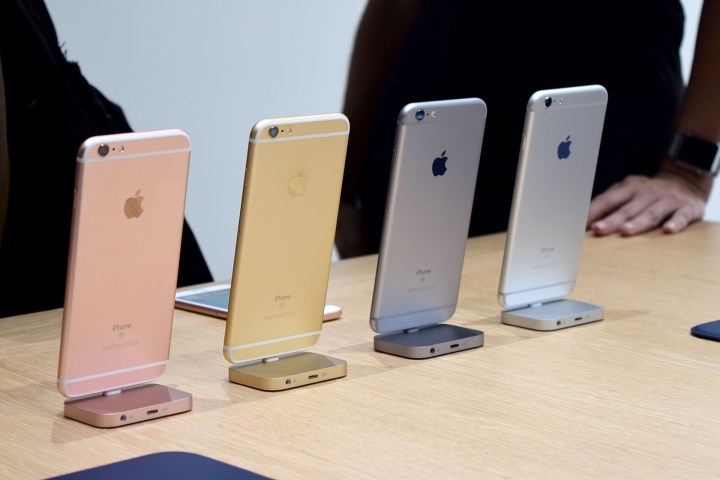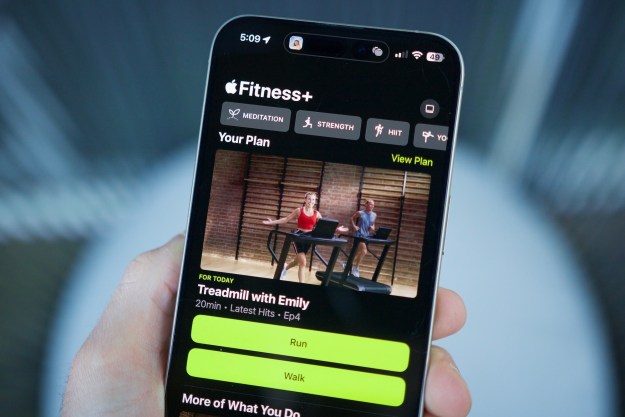
Updated on 03-17-2016 by Julian Chokkattu: Added data that the amount of AMOLED panels to be produced will reach 270 million units this year.
Who will make the OLED screens?
Higher production volumes of AMOLED screens are fueling rumors that Apple is getting ready to produce an AMOLED iPhone as early as next year. Business Korea says a market research firm, UBI, found that South Korean manufacturers will dominate the global supply of AMOLED panels for years to come, as the amount they produce this year alone is likely to hit 270 million units — that’s 95 percent of global shipments.
These manufacturers, like Samsung Display and LG Display, will rake in about $14.218 billion in sales. Business Korea mentions that Apple will likely “apply the same panel,” and Samsung or LG will partner with the company to produce the AMOLED display. But while we have more evidence of AMOLED panels being produced in greater quantities, we still can’t verify that most of it is indeed for the Cupertino company.
But there has also been a lot of talk about who will actually produce the OLED iPhone screens for Apple. We’ve heard rumors, like the one from Business Korea, that everyone from LG and Samsung to AUO and JDI are in the running.
The latest report of LG ramping up production gives credence to the company being a provider for Apple, but a previous report from ETNews contradicts an earlier rumor from Focus Taiwan, which said Apple might be planning a financial investment in AU Optronics. AUO declined to comment, but its stock price rose more than five percent on the news, with investors confident the deal will bring increased sales.
AUO has been working on AMOLED screens for a decade, amassing quite the portfolio. It recently started supplying Huawei and TCL with AMOLED screens for its smartphones. Similar to previous partnerships with smaller companies, Apple will apparently inject a large chunk of cash to increase the supply and workforce.
In December, another ETNews report (from Reuters) claimed that Apple was “close to a final agreement” with LG and Samsung. The two South Korean giants are reportedly planning to invest more than $12 billion to increase OLED screen production if the deal goes through, some of which may come from Apple.
Japanese news publisher Nikkan also said in November that LG, Samsung, and Japan Display were on Apple’s shortlist for the OLED display contract, with Japan Display even converting an Ishikawa factory into a test site for iPhone displays.
JDI currently provides Apple with LCD panels for the iPhone 6S and 6S Plus, making it one of the favorites for the 2018 job. LG has also supplied iPhone displays in the past, and currently manufactures the display for the Apple Watch. Samsung is the only questionable choice, since the two companies are still fighting legal cases against each other in the United States, but it already works with Apple to manufacture its A9 chipset.
Samsung has a team dedicated to building displays for Apple products, and is the creator of the Super AMOLED brand, used on almost all of Samsung’s high-end Galaxy smartphones. If AUO or LG is incapable of meeting the demand of the iPhone 8, we suspect Samsung will be Apple’s fallback choice, just as it has been for the past few years.
LG is primed for an increase in OLED production, having invested $8.7 billion in a new OLED facility, where it will build panels for TVs, car dashboards, and wearables. The company may be planning capacity upgrades to show off its mass production capabilities to Apple, industry sources suggested to Nikkan. LG is one of the three
When will the iPhone go OLED?
A new report from Korea-based ETNews, as quoted by DigiTimes, says that LG Display is finalizing plans to produce 75,000 OLED substrates monthly throughout the first half of 2017, along with an additional 20,000 substrates monthly at its other facilities. Ramping up production may mean we could see LG providing OLED screens for Apple by 2017.
Earlier reports have said Apple wants to switch to OLED in 2017 or 2018, but another report from ETNews suggests a deal between Apple and Samsung has been reached for the iPhone 7, which is most likely coming out later this year. The deal reportedly includes a $7.47 billion investment by Samsung to build an additional display plant, with production expected to begin in the next few months and expand in 2017.
Samsung will allegedly start with an output of 30,000 panels per month, expanding to 45,000 panels per month in 2017. The report claims that Samsung Display, a division inside the South Korean conglomerate, will outsource manufacturing to LG Display, AP System, and HB Technologies to help with the bulk of manufacturing.
It’s unclear whether Apple and its suppliers will be able to get enough OLED screens ready for the iPhone 7, which is expected to launch in September of 2016. Based on previous reports, it seems more likely that Apple will move to OLED screens on later iPhones.
Apple’s not leaving it all to chance
Apple may also be working on new screen technology at a secret laboratory in Taiwan, suggesting it may switch to an improved LCD panel before introducing OLED in the future, or as a backup should the OLED deals not be signed.
Although suppliers often clamor to win Apple contracts, since iPhone sales are typically high, tensions can run high. As we said before Samsung has its beef with Apple in the United States, and both South Korean manufacturers are apparently negotiating hard with Apple over supplying flexible screen panels in the future. Even when Apple thinks the battle has been won things don’t always go swimmingly, as proven with the bankruptcy of GT Advanced Systems — Apple’s sapphire crystal glass supplier.
Of course, none of this is official yet, and it’s unlikely that OLED panels will grace the
Previous Updates:
Updated on 01-19-2016 by Julian Chokkattu: Added information about LG increasing production of OLED substrates through 2017.
Updated on 01-14-2016 by David Curry: Added in news of Apple’s rumored deal with Samsung for OLED screens on the
Updated on 01-13-2016 by David Curry: Added news that Apple might invest in AU Optronics
Updated on 12-30-2015 by Andy Boxall: Added further rumors on Apple’s future OLED screen plans
Editors' Recommendations
- You’ll soon be able to control your iPhone and iPad with your eyes
- iOS 17.5 just launched with a huge security feature for your iPhone
- The Apple Watch is the best iPhone camera accessory you didn’t know you needed
- A big iPhone update is right around the corner
- I found an amazing new way to use my iPhone 15 Pro Max


